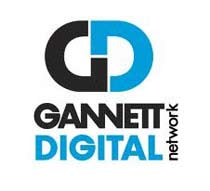 Josh Resnik is VP/GM of Gannett Digital Network, a group of Gannett owned-and-operated websites. He discussed his network of site’s recent redesign and its impact on digital advertising strategy with AdExchanger.com.
Josh Resnik is VP/GM of Gannett Digital Network, a group of Gannett owned-and-operated websites. He discussed his network of site’s recent redesign and its impact on digital advertising strategy with AdExchanger.com.
AdExchanger.com: Why move towards the OPA ad units, the bigger ad units? Are there any pitfalls to that strategy that you need to look out for as an owner of that type of advertising?
JR: I think overall with where we’re going, we’re very focused on user engagement on our sites. And one of the core principles of what we’re trying to do with our redesign is to de‑clutter our sites and make sure that users can easily find the content that they’re most interested in. Enabling higher impact ad units is a part of that for two reasons. 1) There’s the concept of advertising as content, where you can, with the right experience, provide users with access to products and services that are of interest to them through experiences that are engaging to them.
The other piece is enabling advertisers to get their message across in a clean, safe environment where they can feel comfortable knowing that the messages will reach their target consumers. And or course, high impact units are one way of enabling that.
On pitfalls, obviously what you want is to create the right balance, where your users remain engaged with your content and you continue to provide the same type of experience that has caused them to be engaged for so many years. So, obviously, if you had a site that was all ads and no other content, that would provide little utility to the user, would turn the user off, and lose your ultimate value proposition for the advertisers you were trying to please in the first place.
So it’s all part of a balance where you’re creating the right experience for your consumers. But we think that there’s plenty of opportunity to include high impact ad units as a part of an engaging experience for your audience.
Can you talk a little bit on how you measure engagement for the redesign and ultimately success?
Josh: Sure. We’re still very new with the redesign, so we will be looking at a lot of metrics over time to see whether we’re doing the right things, and continue to optimize the site experience. And we expect to continue to change the experience over time as we see trends for users and advertisers.
But for what we’ve looked at out of the gate, we’ve seen visitors go up and page views go up and so on. And I’ll tell you, if there’s one thing to focus on, it is in regard to video. A big part of what we wanted to do here is make video a more integrated part of the site experience for our users.
With video in particular, we’ve seen 60% growth year-over-year, which we’re very happy about – and that’s in terms of views, video streams. And what we’ve done is created a much more prominent position for video on the home page. The Home Front video player has been a great vehicle for our sites to showcase the content that they have. It’s in the top module of the page. Sites have the ability to offer multiple videos through a carousel format.
We’ve also got a player in more prominent positioning on the article pages. It’s in the main content while at the top of the story. And we’re sharing content across the sites, as well.
I just mentioned briefly broadcast has obviously a lot of video content. Newspapers are doing a much better job of generating video than in years past, but still more limited than broadcast. But we’re able to share access to Gannett videos from across our network, including from USA Today, so even our smaller sites have had good success taking advantage of the shared content.
We’re doing a better job of suggesting popular and relevant videos to our users throughout the site experience. And we’re even doing more with videos on the mobile sites as well, which we’ve also just redesigned. So video is an important thing for us, and we’ve been really pleased with what we’ve seen out of the gate.
Do you use quadrantONE as part of your solution for driving yield across your sites?
We do. Gannett has an investment in quadrantONE, and it is part of our national monetization strategy. So it’s one way in which we reach national advertisers. And it’s a productive channel for us – as is our own direct sales force.
But one of the more important things we’re doing across our network is the fact that have now consistency with the ad positions on USA Today. That factor is more relevant for our direct sales force than it is for Quadrant One, which does not sell USA Today inventory.
When I’m talking about the consistency with USA Today, we’ve made the ad positions on the local site consistent with the ad positions on USA Today. So that when our national sales team is selling to national advertisers, they can present a value proposition which gives the advertiser access to the USA Today audience as well as the whole local network.
Forgetting even the type of ad unit, whether it’s OPA or otherwise, it’s that consistency that brings a value to national advertisers.
Can you tell me is the inventory 728×90 inventory? 300×250 inventory? Is it a mix with the OPA units?
On the OPA units, there are three high impact OPA units in play. One is the pushdowns which we’ve had active for a long ‑‑ and USA Today has had all of them active for a long time. The local sites are a little bit different across the industry, because typically those are ad units that national advertisers are focused on, as opposed to local advertisers. For us, we’re in an interesting position because we serve both national and local advertisers on our site. We’ve had the push‑downs active for a while. And now we have the XXL and the fixed-panel enabled, among the OPA high impact ad units. We also have some 728×90 and 300×250 on the sites, as well.
Do you have a data strategy, and do you use a sell‑side platform or a data management platform to help you affect that strategy?
We are utilizing a sell‑side platform via quadrantONE. They have launched something called Q, which is where they’ve pooled inventory from their partners, including Gannett, and are making that inventory available for real‑time bidding through using AdMeld as the platform.
Are you retargeting users and reach extension to your advertisers?
So, there’s a few different things wrapped up in there. One is, can we help advertisers re‑target, for example. So we’ve done campaigns before. We did one with Dove where we were helping them retarget Dove users. It was actually Dove for Men. And we were finding them on our network and re‑targeting them for Dove on our network.
There’s the question of reach extension off of our own sites, and finding those users elsewhere. And we have the capability to do it. I will say obviously there are a lot of issues out in the marketplace related to what publishers are doing with their data, where they get the data, and protection of user privacy. And I do think one important thing to note is, for one thing, we’re or course we’re very protective of user privacy, and that’s only in part because of the issues related to potential regulation.
Beyond that, I do think it’s important that we create the right environment for your users. We talked a lot about user engagement at the start of our conversation, and part of that is the trust that they have in your brands and in your sites. Of course, it’s important to maintain that trust through protection of user privacy, as well.
So we’re able to do pretty much any degree of targeting that even say an ad network could do. We’ve got the capabilities to do that. We don’t make our data available. We don’t go out and sell user data in the marketplace. But we use our user data in order to create sophisticated targeting solutions for our advertisers.
By John Ebbert












